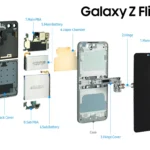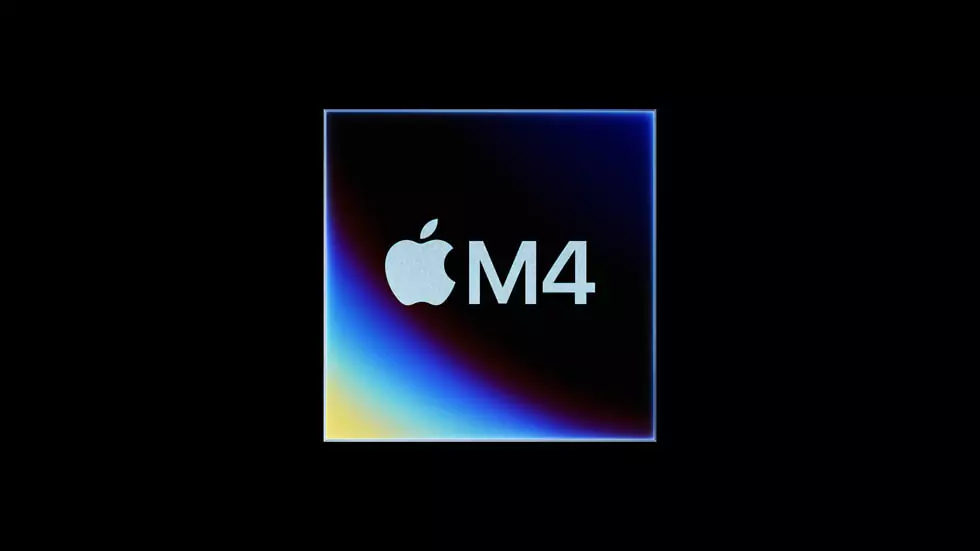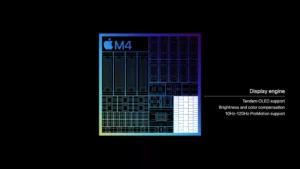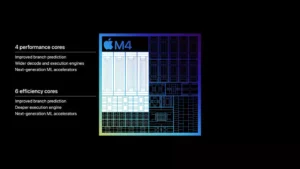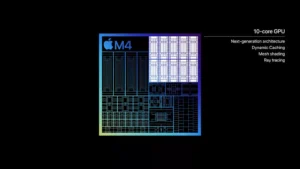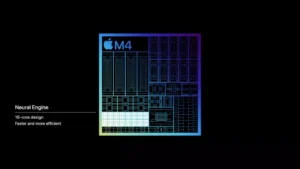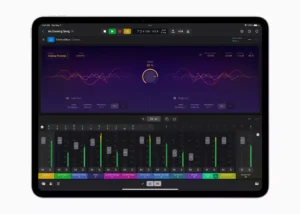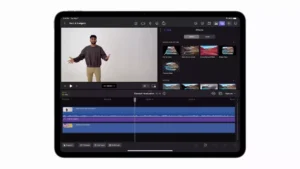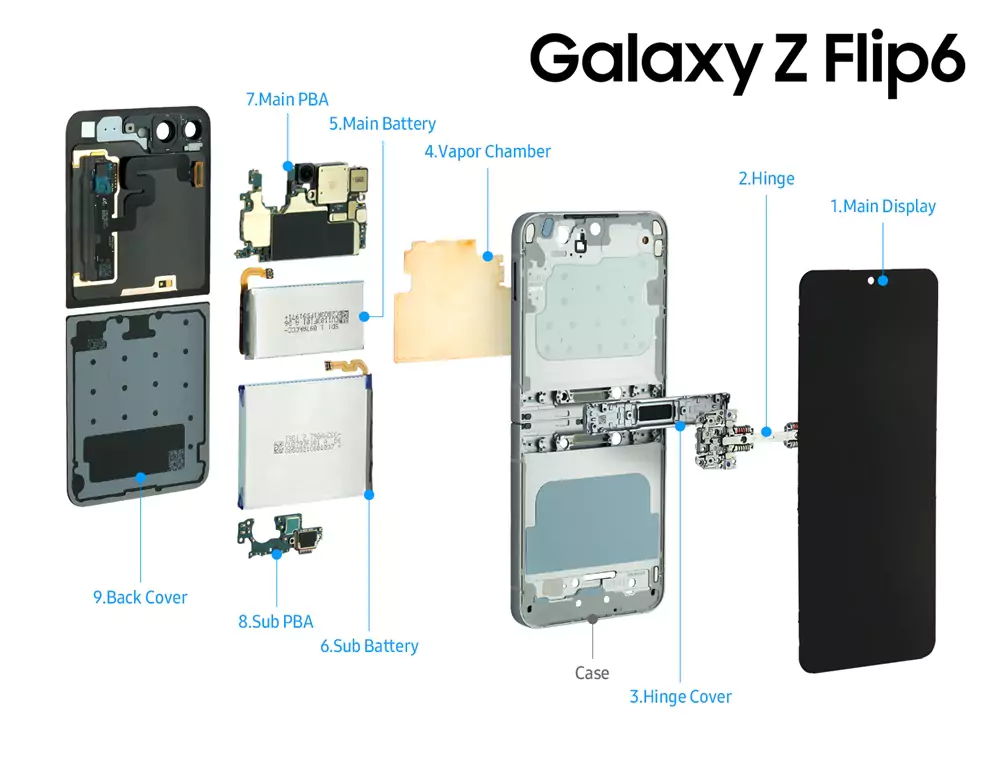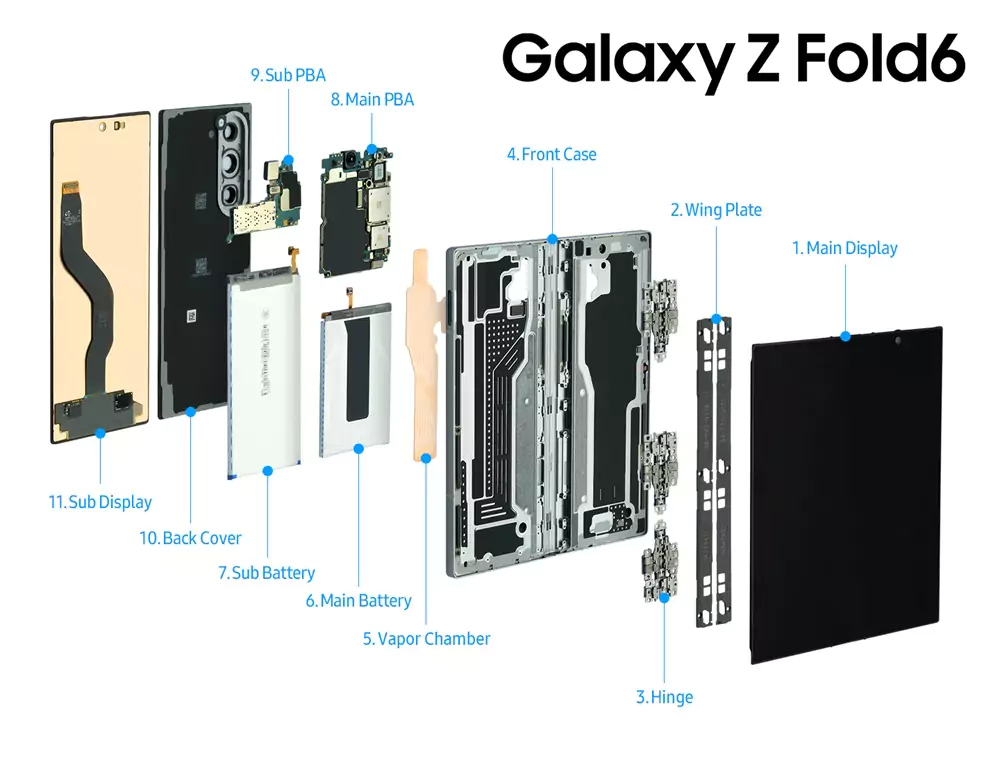Apple unveiled the M4, the newest processor that powers the all-new iPad Pro with incredible performance. The M4 system-on-a-chip (SoC), which was created using second-generation 3-nanometer technology, improves Apple silicon’s industry-leading power efficiency and makes the iPad Pro’s extraordinarily thin design possible. To power the astounding clarity, color, and brightness of the ground-breaking Ultra Retina XDR display on iPad Pro, it also has a completely new display engine.
Up to 10 cores may be found in a new CPU, while the 10-core GPU expands upon the next-generation GPU architecture seen in the M3, introducing hardware-accelerated mesh shading, hardware-accelerated ray tracing, and dynamic caching to the iPad for the first time. With a maximum speed of 38 trillion operations per second, the M4 has Apple’s fastest neural engine ever, surpassing the neural processing unit found in any AI PC on the market today. The next-generation machine learning (ML) accelerators in the CPU, a high-performance GPU, and higher memory bandwidth, together with the M4 chip, make the new iPad Pro an incredibly potent artificial intelligence tool.
“Creating best-in-class custom silicon enables breakthrough products,” says Apple’s senior vice president of Hardware Technologies Johny Srouji, referring to products like the new iPad Pro with M4. “The M4’s power-efficient performance and new display engine enable the iPad Pro’s innovative display and thin design, while major improvements to the CPU, GPU, memory system, and neural engine make the M4 perfect for the newest AI-enabled apps,” he explained. Its new CPU makes the iPad Pro the most powerful gadget of its kind.
New Technology enabling the new iPad Pro
The M4 iPad Pro offers a significant performance improvement compared to the M2 model. It is composed of 28 billion transistors, which are constructed with a second-generation 3-nanometer technology, hence increasing the power efficiency of Apple silicon. M4 also features an entirely new display engine designed with pioneering technologies, enabling the stunning precision, color accuracy, and brightness uniformity of the Ultra Retina XDR display, a state-of-the-art display created by combining the light of two OLED panels.
The new 10-core CPU
The new M4 CPU features up to 10 cores, with four performance cores and six efficiency cores. The next-generation cores feature improved branch prediction, with wider decode and execution engines for the performance cores, and a deeper execution engine for the efficiency cores. Both types of cores also feature enhanced, next-generation ML accelerators.
Compared to the potent M2 in the previous iPad Pro, the M4 offers up to 1.5 times quicker CPU performance. Whether working with complex orchestral music files in Logic Pro or adding highly demanding effects to 4K video in LumaFusion, M4 boosts performance across pro workflows.
iPad Pro’s GPU brings new capabilities
The next-generation graphics architecture of the M3 series of processors is expanded upon by the new 10-core GPU of the M4. It features Dynamic Caching, an Apple innovation that allocates local memory dynamically in hardware and in real time to dramatically increase the average utilization of the GPU. Performance for even the most demanding pro apps and games is greatly improved by this.
For the first time, hardware-accelerated ray tracing is available on the iPad, allowing for even more lifelike reflections and shadows in games and other visually stimulating content. Hardware-accelerated mesh shading is also built into the GPU, and delivers greater capability and efficiency in geometry processing, enabling more visually complex scenes in games and graphics-intensive apps. Pro rendering performance in apps like Octane gets a huge boost with M4 and is now up to four times faster than on M2.
The CPU and GPU enhancements in M4 preserve Apple silicon’s industry-best performance per watt. M4 can deliver the same performance as M2 using just half the power. Compared with the latest PC chip in a thin and light laptop, the M4 can deliver the same performance using just a fourth of the power.
Ever-Powerful Neural Engine
The chip’s Neural Engine, an IP block devoted to accelerating AI workloads, powers the lightning-fast M4. With a staggering 38 trillion operations per second, this is Apple’s most powerful neural engine ever. It is 60 times faster than the original neural engine found in the A11 Bionic. Together with next-generation ML accelerators in the CPU, the high-performance GPU, and higher-bandwidth unified memory, the Neural Engine makes M4 an outrageously powerful chip for AI.
the new iPad Pro enables users to complete incredible AI tasks quickly and on-device thanks to iPadOS AI capabilities like Live Captions, which provides real-time audio captions, and Visual Look Up, which recognizes items in images and videos.
A single tap on an iPad Pro with M4 can instantly separate a subject from the backdrop of a 4K film in Final Cut Pro, and it can be used to automatically write musical notation in StaffPad by merely listening to a piano performance. Inference workloads can be done efficiently and privately while minimizing the impact on app memory, app responsiveness, and battery life. Compared to other neural processing units in AI PCs today, the neural engine in the M4 is Apple’s most potent to date.
Streaming Media Engine with Smooth, Efficient Performance
The most sophisticated Media Engine available for iPad is found in the M4. In addition to supporting the most popular video codecs, like H.264, HEVC, and ProRes, it brings hardware acceleration for AV1 to iPad for the first time. This enables streaming services to play back high-definition videos with greater power efficiency.
